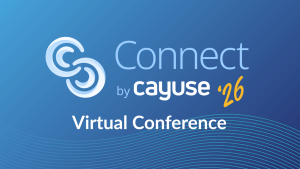Blog
Grant Funding Opportunity: Should You Apply? 10 Criteria to Help You Decide
- Healthcare
- Higher Education
- Life Sciences
- Nonprofit
Researchers are barraged with funding opportunities with a variety of requirements. Each grant funding opportunity is communicated by a request for proposals (RFP), request for applications (RFA), or other similar guidance. The RFP or RFA outlines the requirements for preparing and submitting an application and provides detailed information about the purpose of the funding.
Proposers should thoroughly review the solicitation document and analyze the specifics well in advance to carefully select opportunities based on predetermined criteria. These criteria can be tracked in a pre-award grant management system that will not only organize the relevant data, but provide alerts for all those involved in the process. The process of determining which funder and opportunity have the best fit should follow a systematic approach so that institutions and applicants can maximize their time and prepare applications that match the funder’s institutional goals and resources.
One such approach could be a go/no-go matrix or pros and cons list based on 10 key criteria:
1. Project aligns with the institution’s strategic plan
All institutions have a strategic plan, and aligning a proposal to that plan is ideal from both a funder and institutional perspective. Proposals with a strong correlation to the strategic plan convey to the funder that the institution will support the work and be invested in assuring it is completed. The related strategic objectives can be identified in the narrative of the proposal and tied to outcomes of the project.
2. College expertise & experience in project area
Ask yourself, is this a new or weak area for this institution, or are we strong in this area? Depending on the goals of the funder, this will be an important consideration. If this is a new area for the institution and the goal of the funder is to start a new program, then the fit may be appropriate. On the other hand, if the funder’s goal is to provide mentorship to others based on successes of your project, weakness in the area of expertise may be a red flag for reviewers.
3. Proposed principal investigators
What is the capacity of the principal investigators or leaders of the project? Are they readily available at your institution or proposed partner institutions? Has the lead been successful with similar projects that will convey capability to the reviewers?
4. Financial potential (return on investment)
Will the grant funding opportunity provide enough return for the effort put forth by the Principals on the project? Will it cost the institution more in cost share than it is worth in effort?
5. Potential partners
Partners and collaborations are the name of the game with a grant funding opportunity. Funders prefer researchers that are partnering for expertise and sharing results. Many solicitations require letters of support from partners, and not just “rah-rah” letters. They want to know how that partner will contribute to the success of the project, so this component requires forethought and planning as opposed to what often happens: a last-minute rush to gather letters from partners.
6. Supporting research on need
Do you have the supporting research to establish the need for the project? What is the problem and why is it happening? What activities will support the effort to address the problem and how will these activities be evaluated? Is there strong third party data available or only anecdotal information? This requires you to think through the research that supports the need (or problem).
7. Competitiveness of solicitation
What are the odds for success? Determine how many proposals were received and funded in previous solicitations. Check the solicitation and the funder website.
8. Capacity to effectively respond
Do you, as the researcher, have the time to prepare a proposal that is competitive and do you have the support of contracts and grants management staff to assist with formatting, submission etc.?
9. Rapport with the funding agency
Does the researcher have a positive rapport with the funding agency? Have there been previous compliance incidents with the funder which might hamper success? Or is the solicitation designed for first time applicants.
10. College resources required (space, match, personnel)
What resources are required by the institution and the researcher? Is the institution willing to commit and make these available?
Summary
Applying for a grant funding opportunity requires significant effort on the part of the institution and the researcher. The grants administration office can play a valuable role in guiding researchers to seek funding that fits the goals of the institution and the researcher. Using a systematic approach to determine if a funding solicitation (RFP or RFA) fits will save time and resources. There are numerous types of a grant funding opportunity, and finding the best match will likely increase the success rate. To find more grant funding opportunities faster, check out Fund Finder.

